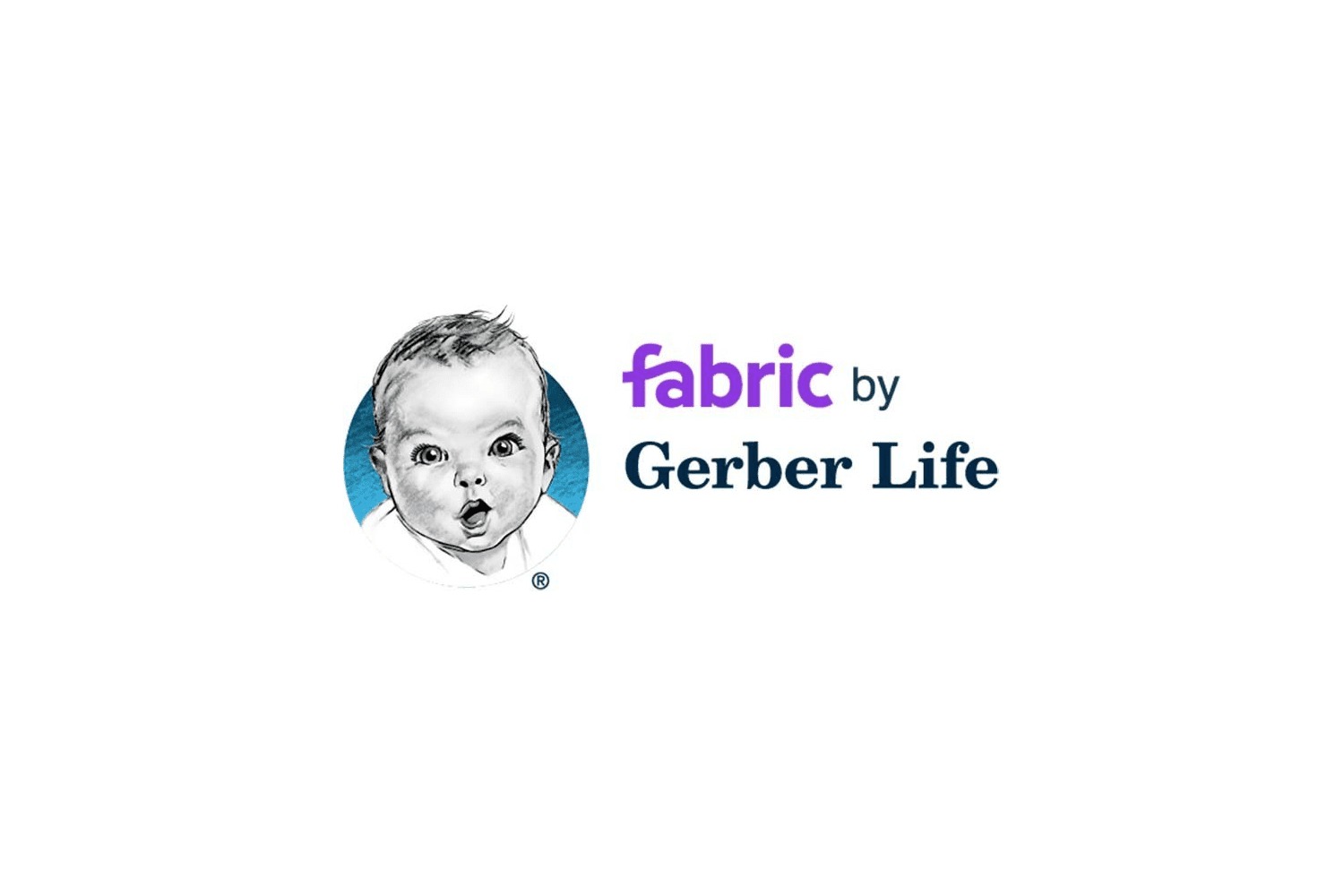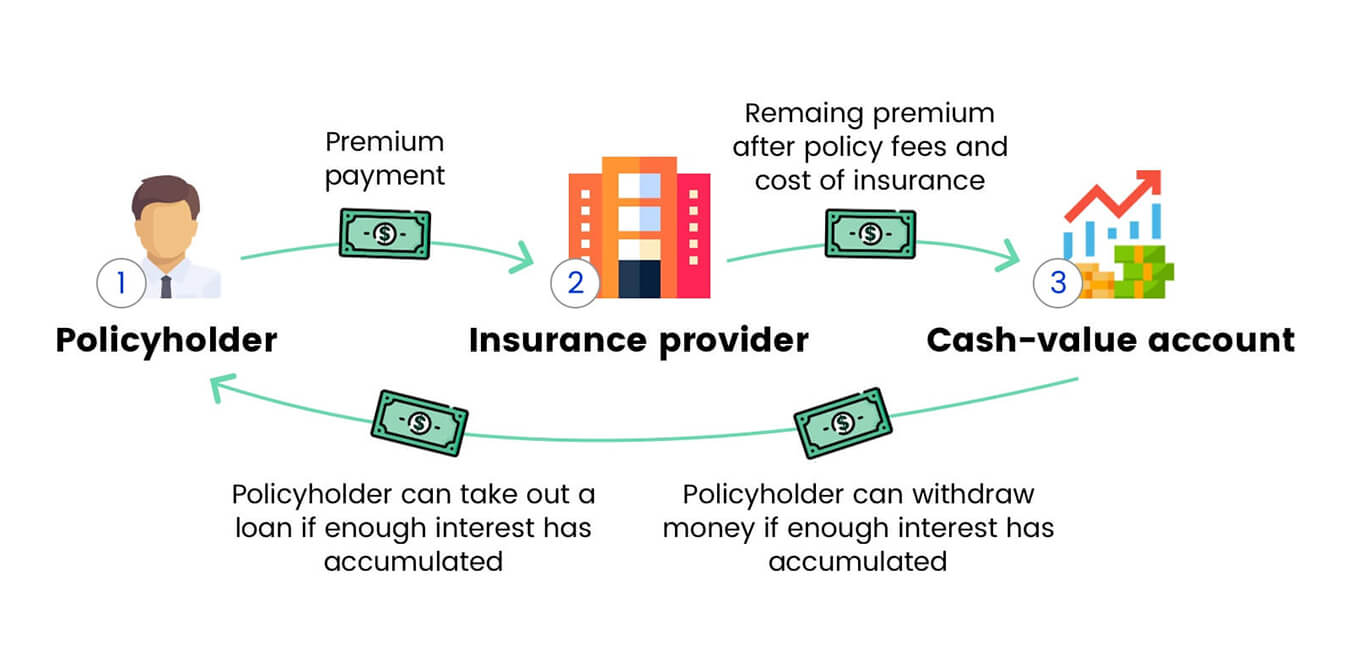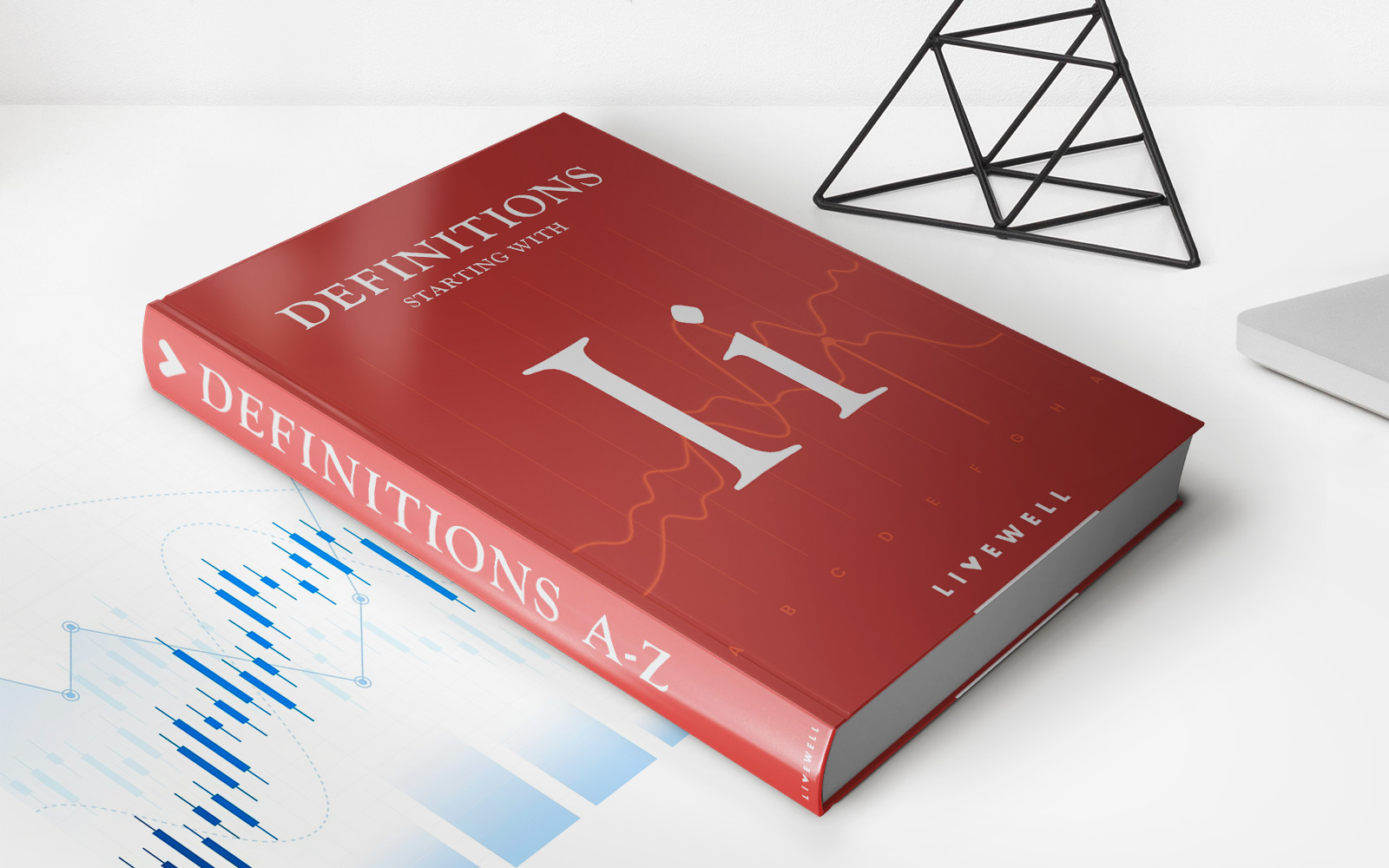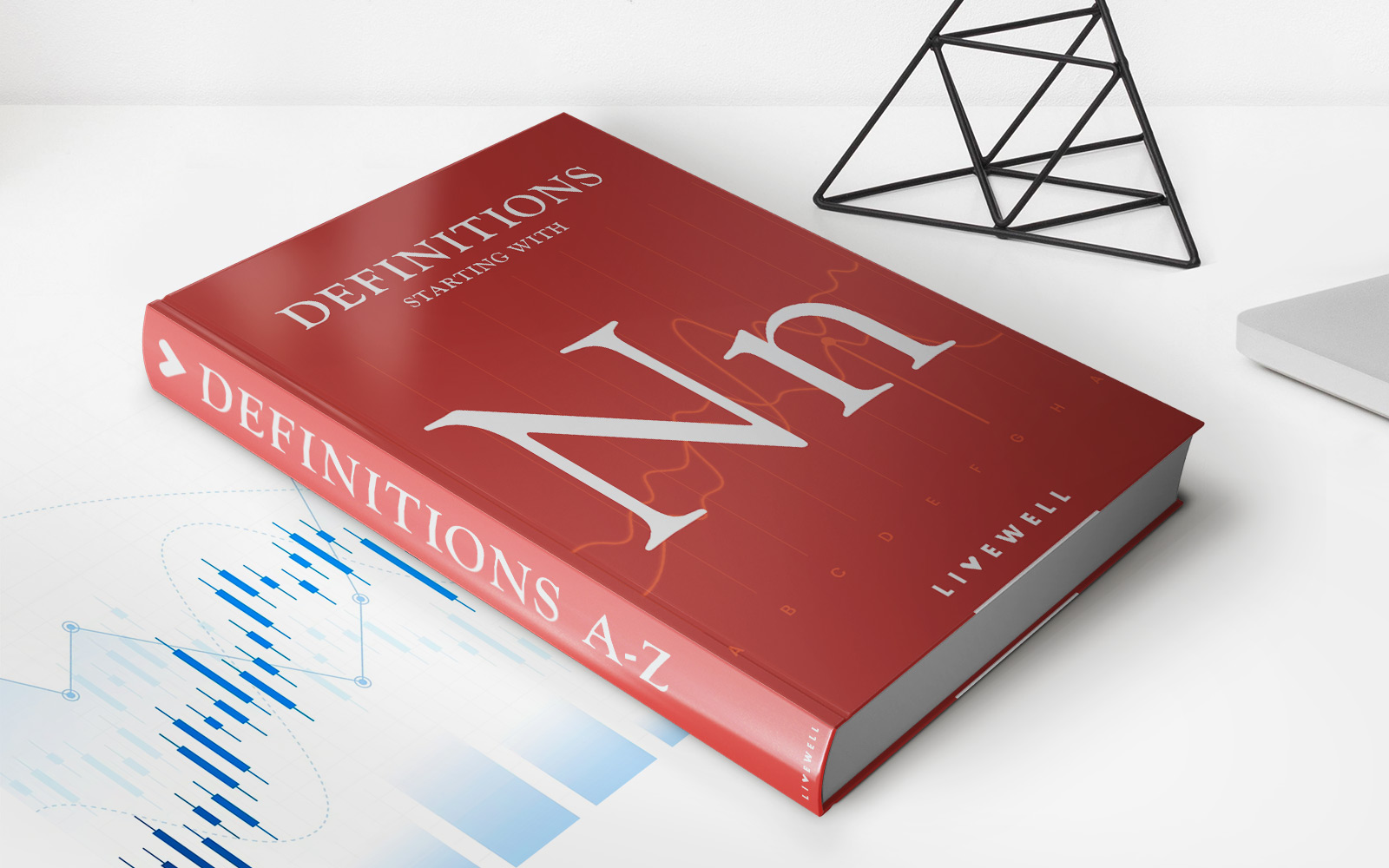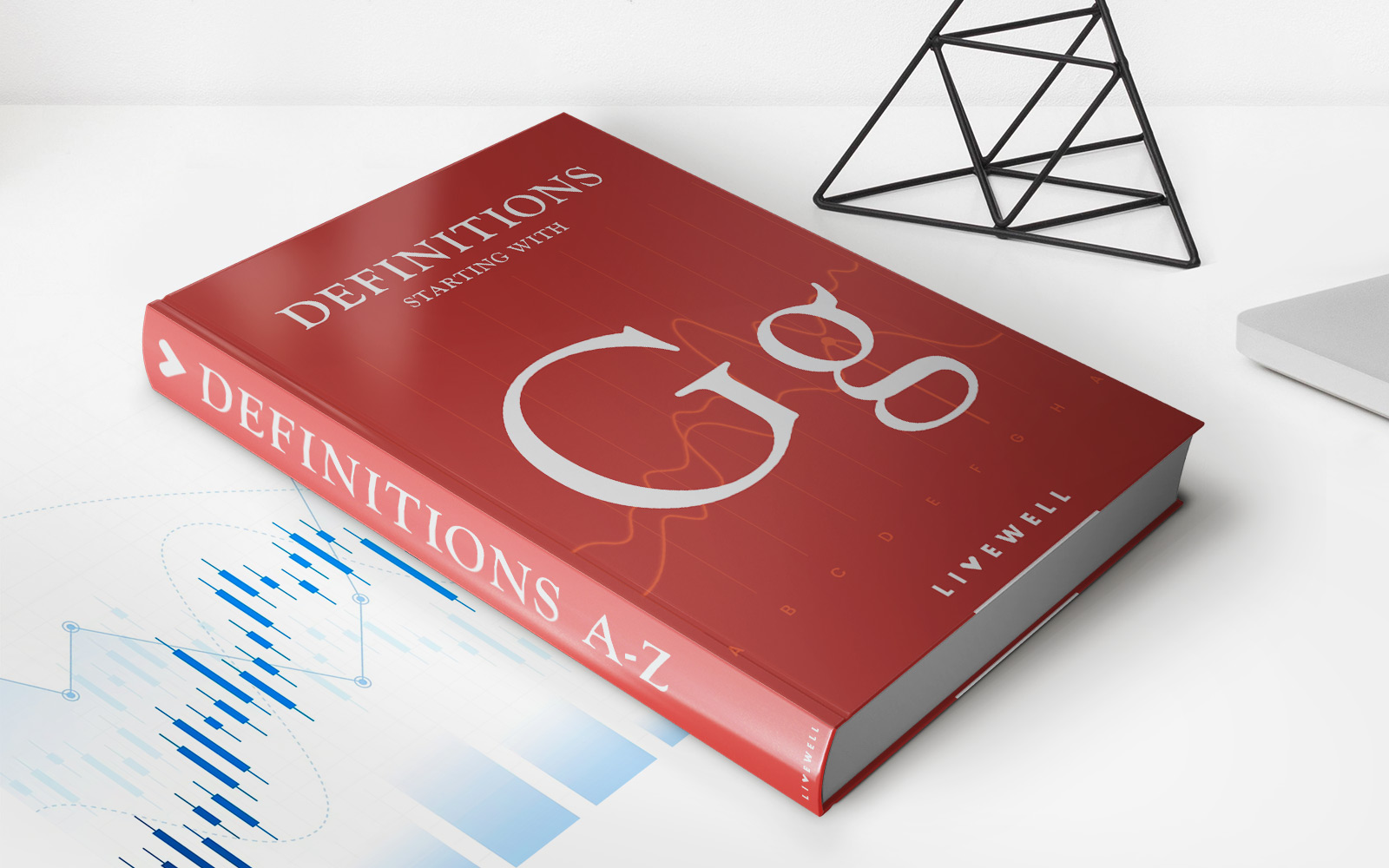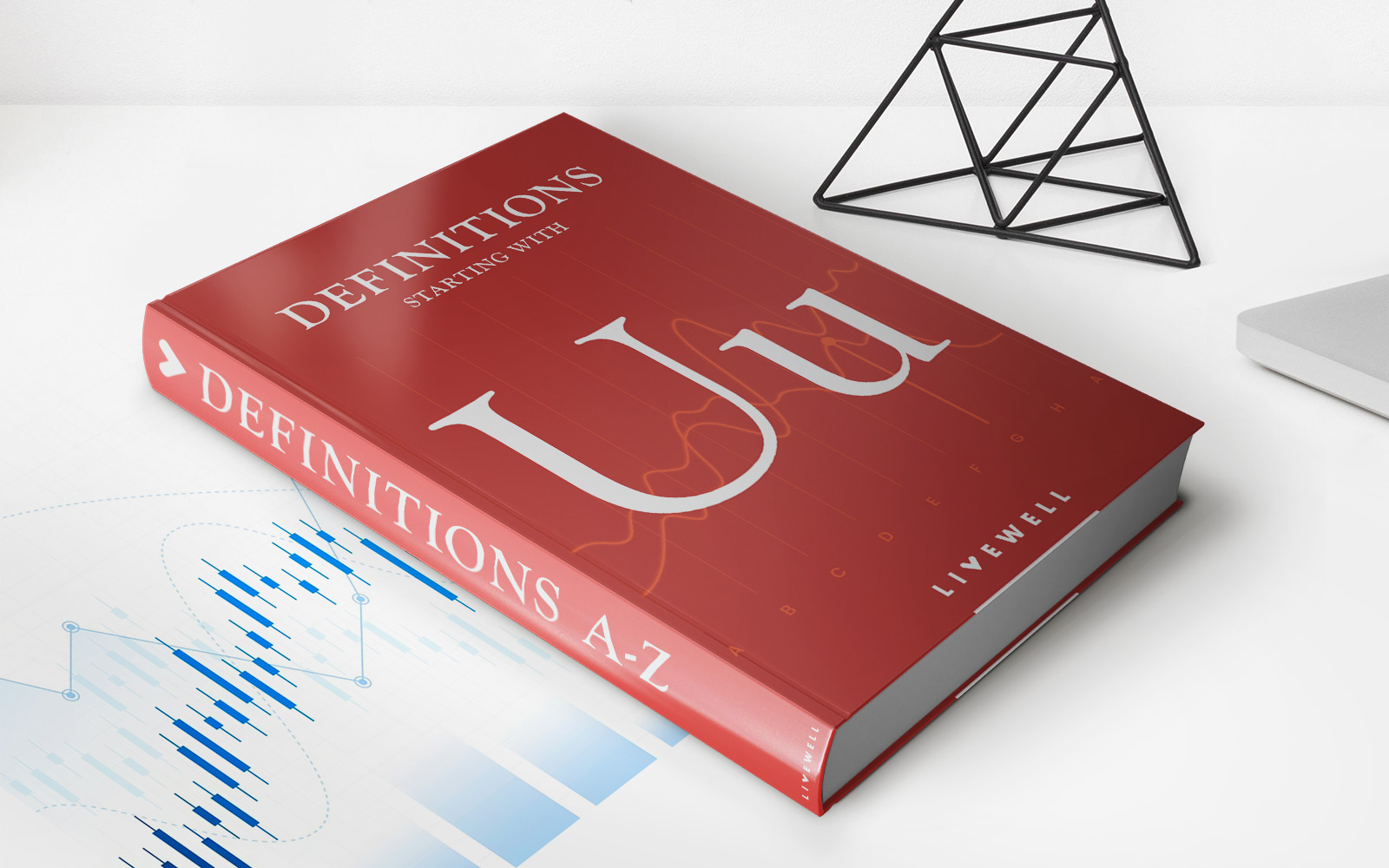Home>Finance>How To Open An Index Universal Life Insurance Policy


Finance
How To Open An Index Universal Life Insurance Policy
Modified: February 21, 2024
Looking to secure your financial future? Learn how to open an Index Universal Life Insurance policy and gain peace of mind in your personal finance planning.
(Many of the links in this article redirect to a specific reviewed product. Your purchase of these products through affiliate links helps to generate commission for LiveWell, at no extra cost. Learn more)
Table of Contents
- Introduction
- What is an Index Universal Life Insurance Policy?
- Pros and Cons of Index Universal Life Insurance
- How to Determine If an Index Universal Life Insurance Policy is Right for You
- Steps to Open an Index Universal Life Insurance Policy
- Choosing the Right Insurance Carrier
- Understanding Policy Terms and Conditions
- Completing the Application Process
- Premium Payments and Policy Management
- Monitoring and Adjusting the Policy Over Time
- Conclusion
Introduction
Welcome to the world of index universal life insurance! Whether you are considering purchasing a policy or simply curious about this type of coverage, this article aims to provide you with a comprehensive understanding of index universal life insurance and how to open a policy. In today’s uncertain financial landscape, having a robust life insurance plan is essential for protecting your loved ones’ future.
Index universal life insurance is a unique form of life insurance that combines a death benefit with an investment component linked to market indexes. Unlike traditional whole life insurance, index universal life policies offer potential for higher returns by tracking equity market indexes. This innovative feature has attracted many individuals who seek the opportunity to grow cash value over time.
While index universal life insurance has its advantages, it is important to evaluate whether it aligns with your financial goals and risk tolerance. In this article, we will explore the pros and cons of index universal life insurance to help you make an informed decision.
Furthermore, we will guide you through the process of opening an index universal life insurance policy. From choosing the right insurance carrier to understanding policy terms and conditions, we aim to provide you with a step-by-step approach to ensure a smooth application process. Additionally, once your policy is in place, we will discuss how to manage and monitor it effectively, allowing you to make any necessary adjustments along the way.
It’s important to note that this article does not substitute professional financial advice. Each individual’s situation is unique, and consulting with a qualified insurance agent or financial advisor is recommended to assess your specific needs and goals. With that said, let’s dive into the world of index universal life insurance and explore the possibilities it can offer for your financial future.
What is an Index Universal Life Insurance Policy?
An index universal life insurance policy, also known as IUL, is a type of permanent life insurance that combines a death benefit with a cash value component linked to the performance of a specified stock market index, such as the S&P 500. With an IUL policy, a portion of the premiums paid by the policyholder is allocated towards the cash value account, which can grow over time based on the performance of the chosen index.
The growth potential of the cash value account in an IUL policy is tied to the upward movements of the chosen index. Some policies may have a cap or limit on the amount of growth that can be credited to the cash value account, while others may have a participation rate that limits the percentage of index gains that are credited to the account. Additionally, IUL policies often come with a minimum guaranteed interest rate, ensuring that the cash value account does not go below a certain level, even in the event of poor index performance.
One of the key features that sets an IUL policy apart from other types of life insurance is its flexibility. Policyholders have the ability to adjust their premium payments and death benefit amounts within certain limits, allowing them to tailor the policy to their changing needs and financial circumstances. Furthermore, the cash value accumulated in an IUL policy can be accessed through policy loans or withdrawals, providing a potential source of funds for emergencies or other financial needs.
It’s important to note that while an index universal life insurance policy offers the potential for cash value growth, it also carries inherent risks. If the chosen index performs poorly, the cash value account may not grow as expected, and the policyholder may need to make additional premium payments to keep the policy in force. It’s crucial for individuals considering an IUL policy to carefully evaluate their risk tolerance and long-term financial goals before committing to this type of coverage.
In the next section, we will delve into the pros and cons of index universal life insurance to help you determine if it is the right fit for your financial strategy.
Pros and Cons of Index Universal Life Insurance
Index universal life insurance offers several advantages and disadvantages that you should carefully consider before deciding if it is the right insurance product for you.
Pros:
- Potential for cash value growth: One of the main attractions of index universal life insurance is its potential to accumulate cash value over time. The cash value is tied to the performance of a stock market index, providing the opportunity for growth in line with market trends.
- Flexibility: IUL policies offer flexibility in premium payments and death benefit amounts. This allows policyholders to adjust their coverage and contributions to align with their changing financial needs and goals.
- Tax advantages: Like other forms of life insurance, the death benefit of an index universal life policy is generally tax-free. Additionally, policyholders can enjoy tax-deferred growth on the cash value portion of the policy, meaning they do not have to pay taxes on the growth until they access the funds.
- Protection and savings combined: By combining a death benefit with a cash value component, index universal life insurance provides policyholders with both protection for their loved ones and a potential savings vehicle.
Cons:
- Market risk: Since the cash value of an index universal life insurance policy is tied to the performance of an underlying market index, there is a level of market risk involved. If the chosen index performs poorly, the cash value may not grow as expected, and additional premium payments may be required to keep the policy in force.
- Complexity: Compared to other types of life insurance, index universal life policies can be more complex in terms of understanding the performance of the underlying index, participation rates, caps, and other policy features. It is crucial to carefully review the policy terms and conditions to ensure you have a clear understanding of how your policy will function.
- Potential for higher premiums: While there is a possibility for cash value growth, index universal life insurance policies typically come with higher premiums compared to other types of life insurance. This can make it more challenging for individuals on a tighter budget to afford the coverage.
- Cash value limitations: Some IUL policies may have limitations on the amount of growth that can be credited to the cash value account. This could be in the form of caps or spread fees that reduce the amount of index gains that are credited to the account.
Understanding the pros and cons of index universal life insurance is essential in making an informed decision about whether this type of policy aligns with your financial goals and risk tolerance. In the next section, we will discuss how to determine if an index universal life insurance policy is the right fit for you.
How to Determine If an Index Universal Life Insurance Policy is Right for You
As with any financial decision, it’s important to carefully evaluate whether an index universal life insurance (IUL) policy is the right fit for your individual circumstances. Here are some factors to consider when determining if an IUL policy aligns with your needs and goals:
Financial Goals:
Think about your long-term financial goals and how an IUL policy can help you achieve them. If you are looking for a combination of life insurance protection and potential cash value growth, an IUL policy may be a suitable option. However, if your primary goal is pure life insurance coverage without any investment component, there may be other types of policies that better suit your needs.
Risk Tolerance:
Consider your risk tolerance in relation to market fluctuations. While an IUL policy offers potential for cash value growth tied to market indexes, it also exposes you to market risks. If you are comfortable with the possibility of limited or negative growth during periods of market downturns, an IUL policy may be suitable. However, if you have a low risk tolerance and prefer more stable and predictable returns, you may want to explore other types of life insurance policies.
Financial Stability:
Assess your financial stability and ability to meet the premium payments of an IUL policy. These policies typically come with higher premiums compared to other types of life insurance. Evaluate your budget and ensure that you can comfortably afford the premium payments for the duration of the policy. Missing payments or surrendering the policy prematurely may result in loss of coverage or financial penalties.
Policy Flexibility:
Consider the flexibility offered by an IUL policy. These policies often allow you to adjust premium payments and death benefit amounts within certain limits. Assess whether the ability to modify your coverage aligns with your changing financial circumstances and long-term goals.
Insurance Needs:
Review your insurance needs and the purpose of the coverage. If your primary objective is to protect your loved ones and provide a death benefit in the event of your passing, a traditional term life insurance policy may be a more straightforward and cost-effective solution. However, if you are seeking both protection and an opportunity for cash value growth, an IUL policy could be a suitable option.
Ultimately, the decision to purchase an index universal life insurance policy should be based on a careful evaluation of your own personal and financial situation. Consulting with a qualified insurance agent or financial advisor can provide valuable insights and guidance to help you make an informed decision.
In the next section, we will walk you through the step-by-step process of opening an index universal life insurance policy.
Steps to Open an Index Universal Life Insurance Policy
Opening an index universal life insurance (IUL) policy involves a series of steps to ensure a smooth application process. Here are the key steps to follow:
1. Research and Compare Insurance Carriers:
Begin by researching and comparing different insurance carriers that offer index universal life insurance policies. Look for reputable companies with a strong financial standing and a track record of excellent customer service. Consider factors such as policy features, premium rates, and customer reviews to help you make an informed decision.
2. Determine Coverage Amount and Policy Duration:
Assess your insurance needs and determine the coverage amount and policy duration that align with your financial goals. Consider factors such as existing debts, income replacement needs, and future expenses. This will help you narrow down the options and select the appropriate coverage for your specific requirements.
3. Request Quotes and Illustrations:
Reach out to the selected insurance carriers and request quotes and policy illustrations for the chosen coverage amount and policy duration. These illustrations will provide you with a detailed breakdown of the premium payments, cash value growth projections, and death benefit amounts over time. Review and compare these illustrations to get a clear understanding of the policy’s potential performance.
4. Complete Application and Underwriting Process:
Once you have selected a carrier and are satisfied with the policy illustration, complete the application process. Provide accurate and truthful information about your health, lifestyle, and financial history. The insurance company will review this information and may require a medical exam or request medical records to assess your insurability. Cooperate fully with the underwriting process to ensure a smooth application review.
5. Review Policy Terms and Conditions:
When the application is approved, carefully review the policy terms and conditions before signing the final documents. Make sure you fully understand the premium payment schedule, death benefit provisions, cash value growth potential, fees, and any other policy-specific details. Seek clarification from the insurance company or your agent if you have any questions or concerns.
6. Make Initial Premium Payment:
Once you are satisfied with the policy terms, make the initial premium payment as per the agreed schedule. Ensure that the payment is made on time to activate the policy and ensure coverage. Consider setting up automatic payments or reminders to avoid missing premium payments in the future.
7. Stay Connected with Your Insurance Agent:
Maintain regular communication with your insurance agent to keep them updated on any changes in your circumstances and to receive ongoing support and guidance. Your agent can assist you with policy management, addressing any concerns, and making adjustments to the policy as needed.
Opening an index universal life insurance policy requires thoughtful consideration and thorough evaluation. By following these steps and seeking assistance from qualified professionals, you can navigate the process with confidence and secure a policy that aligns with your financial goals.
In the next section, we will delve into important factors to consider when choosing the right insurance carrier for your index universal life insurance policy.
Choosing the Right Insurance Carrier
Choosing the right insurance carrier is a crucial step when opening an index universal life insurance (IUL) policy. The insurance carrier you select will not only provide the policy but also play a significant role in the performance, reliability, and service of your policy. Here are key factors to consider when choosing the right insurance carrier:
Financial Stability:
It is essential to select an insurance carrier with a strong financial standing. Look for companies with high ratings from reputable rating agencies such as A.M. Best, Moody’s, or Standard & Poor’s. These ratings reflect the company’s ability to meet its financial obligations and provide long-term security for your policy.
Reputation and Customer Service:
Research the reputation and customer service of different insurance carriers. Read customer reviews and testimonials to get a sense of the experience others have had with the company. Look for carriers that are known for their exceptional customer service, prompt claims processing, and transparent communication.
Policy Features and Options:
Compare the policy features and options offered by different carriers. Look for carriers that provide flexible premium payment options, death benefit options, and potential enhancements or riders that align with your specific needs and goals. Consider any additional benefits or unique features that may differentiate one carrier from another.
Premium Rates:
Obtain premium quotes from multiple carriers and compare the rates. While premium pricing should not be the sole determining factor, it is important to ensure that the cost of the policy fits within your budget. Keep in mind that index universal life insurance policies generally have higher premiums compared to other types of life insurance, so evaluate whether the cost is justified by the benefits and potential returns.
Expertise and Experience:
Consider the expertise and experience of the insurance carrier in offering index universal life insurance policies. Look for carriers that have a proven track record in underwriting and managing IUL policies. A carrier with experience in this specific type of coverage is more likely to have the necessary knowledge and expertise to provide comprehensive support and guidance throughout the life of your policy.
Company Ethics and Values:
Examine the company’s ethics, values, and commitment to policyholders. Research their approach to customer satisfaction, claims handling, and community involvement. Choose an insurance carrier that aligns with your own values and has a reputation for treating their policyholders with fairness and respect.
By carefully evaluating these factors and conducting thorough research, you can choose an insurance carrier that meets your expectations and provides the foundation for a successful index universal life insurance policy. Remember to consult with an experienced insurance agent or financial advisor who can offer valuable insights and help you make an informed decision.
In the next section, we will focus on understanding policy terms and conditions, including key elements to look for in an index universal life insurance policy.
Understanding Policy Terms and Conditions
Understanding the terms and conditions of an index universal life insurance (IUL) policy is crucial to ensure that you make informed decisions and fully grasp how the policy works. Here are some key elements to look for when reviewing the terms and conditions of an IUL policy:
Premiums:
Review the premium payment schedule and understand how much you are required to pay and when. Consider whether there are any flexible premium options, such as a minimum premium, target premium, or the ability to alter premium payments within certain limits. Make sure you are comfortable with the premium amounts and that they fit within your budget.
Death Benefit:
Understand how the death benefit is calculated and when it will be paid out. Determine if the death benefit is based solely on the policy’s face value or if it includes any potential cash value growth. Additionally, consider whether there are any provisions for accelerating the death benefit in the event of a terminal illness or qualifying medical condition.
Cash Value Growth:
Examine how the cash value grows and what factors influence its growth. Look for details about how the growth is tied to the performance of the underlying index and whether there are any caps or limitations on the amount of growth that can be credited. Understand any fees or expenses that may be associated with the cash value account.
Participation Rates and Index Calculation:
Find out the participation rate, which determines the percentage of the index gains that are credited to the cash value account. Understand how often the index is measured, how the gains are calculated, and if there are any adjustments or expenses that may affect the index calculation.
Policy Loans and Withdrawals:
Review the terms and conditions related to policy loans and withdrawals. Understand any limitations, interest rates, and repayment terms associated with accessing the cash value through loans or withdrawals. Consider the impact of loans and withdrawals on the death benefit and cash value growth.
Riders and Enhancements:
Explore any additional riders or enhancements that can be added to the policy to customize your coverage. These may include features such as a long-term care rider, disability income rider, or premium waiver rider. Evaluate any costs associated with these options and determine if they align with your specific needs.
Policy Termination and Surrender:
Understand the conditions under which the policy can be terminated or surrendered voluntarily. Review any surrender charges or penalties associated with terminating the policy before the end of the surrender period. Consider the potential impact of surrendering the policy on death benefit and cash value.
It’s essential to carefully review the policy terms and conditions and seek clarification from the insurance carrier or your agent if you have any questions or concerns. Take the time to fully understand how the policy functions and how it aligns with your financial goals and risk tolerance.
In the next section, we will discuss the process of completing the application for an index universal life insurance policy.
Completing the Application Process
Completing the application process is an important step in obtaining an index universal life insurance (IUL) policy. It involves providing accurate and detailed information to the insurance carrier to assess your insurability and determine the terms and premiums of your policy. Here’s what you need to know about completing the application process:
Gather Required Information:
Before starting the application, gather all the necessary information. This may include personal details such as your name, date of birth, address, and contact information. You will also need to provide information about your employment, income, medical history, and lifestyle habits. Having this information readily available will help streamline the application process.
Fill Out the Application Form:
Complete the application form provided by the insurance carrier. Follow the instructions carefully and provide accurate and truthful information. Double-check all entries for any errors or omissions before submitting the application. Inaccurate or incomplete information can delay the underwriting process and potentially affect the terms of your policy.
Undergo Medical Examination (if required):
Depending on the insurance carrier and the coverage amount you are applying for, a medical examination may be required. The medical exam typically involves measurements such as height, weight, blood pressure, and blood tests. The results of the medical exam will help the insurance carrier assess your insurability and determine the premiums for your policy.
Provide Additional Documentation (if requested):
The insurance carrier may request additional documents or medical records to support the information provided in the application. This could include medical reports, lab test results, or information about pre-existing conditions. Ensure that you provide the requested documents promptly to avoid delays in the underwriting process.
Review and Sign the Application:
Before submitting the application, carefully review all the information provided. Make sure everything is accurate and complete. If necessary, consult with your insurance agent or advisor for guidance. Once you are satisfied with the application, sign and date it to acknowledge your agreement with the information provided.
Submit the Application:
Submit the completed application to the insurance carrier through the designated channels. This may be done online, by mail, or through your insurance agent. Ensure that you retain a copy of the application for your records.
Follow Up and Communication:
Stay in contact with the insurance carrier or your insurance agent to ensure that the application is being processed. Respond promptly to any additional requests for information or documents. Regular communication will help keep you informed about the progress of your application and ensure a smooth process.
Completing the application process for an index universal life insurance policy requires attention to detail and accurate information. By providing accurate and thorough information, you can ensure a smooth underwriting process and increase the likelihood of your application being approved. In the next section, we will discuss premium payments and the ongoing management of your IUL policy.
Premium Payments and Policy Management
Once you have successfully obtained an index universal life insurance (IUL) policy, it is important to understand how to manage and maintain it effectively. This includes making premium payments on time and staying on top of your policy’s performance. Here’s what you need to know about premium payments and policy management:
Premium Payment Options:
Review the premium payment options provided by the insurance carrier. Understand the frequency and method of premium payments, whether they are monthly, quarterly, annually, or in other intervals. Consider setting up automatic payments to ensure timely premium payment and avoid any lapses in coverage.
Grace Period:
Be aware of the grace period allowed by the insurance carrier. A grace period is the additional time given to make premium payments after the due date without the policy lapsing. Familiarize yourself with the length of the grace period and any associated penalties or fees.
Policy Statements and Account Updates:
Keep track of policy statements and account updates provided by the insurance carrier. Review these documents carefully to understand the performance of your policy’s cash value and any changes in premium amounts or policy terms. Regularly monitoring your policy statements will help you stay informed and make necessary adjustments if needed.
Policy Loans and Withdrawals:
If you need to access the cash value of your policy, familiarize yourself with the process of taking policy loans or making withdrawals. Understand the terms, interest rates, repayment options, and any impact on your policy’s death benefit and cash value growth. Ensure that any withdrawals or loans align with your financial needs and goals.
Premium Adjustments and Flexibility:
Review your policy’s flexibility in adjusting premium payments. Some IUL policies offer the option to increase or decrease premium amounts, subject to certain limitations. Consider whether you anticipate changes in your financial situation that may require adjusting your premium payments and evaluate the feasibility of making these adjustments within your policy’s terms and conditions.
Regular Communication with Your Insurance Agent:
Maintain regular communication with your insurance agent or advisor. Keep them informed about any changes in your circumstances, financial goals, or concerns regarding your policy. They can provide guidance, assist with policy management, and address any questions or issues that may arise.
Policy Reviews and Adjustments:
Periodically review your policy’s performance and reassess its suitability to your changing needs. Consider conducting policy reviews every few years or when major life events occur, such as marriage, the birth of a child, or changes in income. This will allow you to determine if any adjustments are necessary to align your policy with your current situation and long-term goals.
By staying vigilant with premium payments and actively managing your policy, you can ensure continued coverage and maximize the potential benefits of your IUL policy. Regular communication with your insurance agent and periodic policy reviews will help you make informed decisions and adapt your coverage to your evolving financial circumstances.
In the next section, we will discuss the importance of monitoring and adjusting your index universal life insurance policy over time.
Monitoring and Adjusting the Policy Over Time
Monitoring and adjusting an index universal life insurance (IUL) policy over time is essential to ensure that it remains aligned with your financial goals and objectives. Here are important considerations for effectively managing and adapting your policy:
Regular Policy Reviews:
Regularly review your IUL policy to assess its performance and relevance. Conducting policy reviews every few years or when major life events occur can help you evaluate if the policy continues to meet your needs. Consider factors such as changes in income, marital status, or the addition of dependents.
Assess Cash Value Growth:
Monitor the growth of your policy’s cash value component. Stay informed about how the cash value is performing in relation to the underlying index. Evaluate whether the growth aligns with your expectations and financial objectives. If necessary, consult with your insurance agent or financial advisor to discuss potential adjustments.
Consider Policy Adjustments:
If your financial circumstances or objectives change, you may need to consider adjustments to your policy. This could include increasing or decreasing the death benefit, modifying premium payments, or exploring additional riders or enhancements. Assess the flexibility of your policy and consult with experts to determine the most appropriate adjustments.
Monitor Market Index Performance:
Stay updated on the performance of the market index to which your IUL policy is linked. Understand how changes in the index can affect the growth of your policy’s cash value component. Monitor market trends and consult with financial professionals to assess how market conditions may impact your policy.
Communicate with Your Insurance Agent:
Maintain open communication with your insurance agent or advisor. Share any changes in your financial situation, goals, or concerns related to your policy. Your agent can provide valuable insights, guide you through the monitoring process, and help you make informed decisions about adjusting your IUL policy.
Adjust Premium Payments (if possible):
If your financial circumstances change, review your policy’s provisions for adjusting premium payments. Some IUL policies offer flexibility in changing premium amounts within certain limits. Assess if making adjustments to your premium payments aligns with your budget and long-term financial objectives.
Keep Beneficiaries Updated:
Regularly review and update the beneficiary designations on your policy. Life events such as births, deaths, marriages, or divorce may necessitate changes to your beneficiaries. Keeping your beneficiaries updated ensures that the intended individuals will receive the death benefit according to your wishes.
By actively monitoring and adjusting your IUL policy over time, you can ensure that it remains a valuable component of your financial plan. Regular policy reviews, assessing cash value growth, and staying informed about market trends will help you make informed decisions about adjustments to your policy. Utilize the expertise of your insurance agent or advisor to navigate the process effectively.
In the final section, we will conclude our discussion on index universal life insurance.
Conclusion
Index universal life insurance (IUL) can provide a unique combination of life insurance protection and the potential for cash value growth. Understanding the pros and cons of IUL policies, followed by a step-by-step process to open a policy, is crucial in making an informed decision. By choosing the right insurance carrier and comprehending the policy terms and conditions, you can ensure that your IUL policy aligns with your financial goals and needs.
Monitoring and managing your policy over time is essential. Regularly reviewing its performance, assessing cash value growth, and staying informed about market trends will enable you to make any necessary adjustments. Regular communication with your insurance agent or advisor is beneficial in this regard. Additionally, keeping your beneficiaries updated and managing premium payments also contribute to maximizing the benefits of your IUL policy.
It’s worth noting that the information provided here does not replace personalized financial advice. Each individual’s situation is unique, and consulting with a qualified insurance agent or financial advisor is recommended to assess your specific needs.
With a thorough understanding of IUL policies and a proactive approach to managing your policy, you can fully leverage the potential benefits they offer. By protecting your loved ones and potentially accumulating cash value over time, an IUL policy can be a valuable component of your overall financial strategy.
We hope this article has provided you with valuable insights into opening, managing, and adjusting an index universal life insurance policy. Make informed decisions, consult with professionals, and let your IUL policy work for you in securing a bright financial future.

